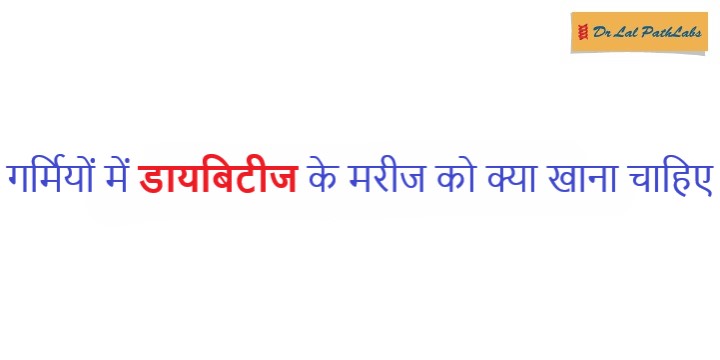Festive Season Diabetes Diet: 7 Simple Tips for Stable Blood Sugar
- 13 Feb, 2024
- Written by Team Dr Lal PathLabs
Medically Approved by Dr. Seema
Table of Contents

The festive season is a time for celebrations, get-togethers, and indulging in mouthwatering sweets and desserts. However, for people with diabetes, it can be challenging to keep blood sugar levels stable when surrounded by tempting treats. By following some simple diet and lifestyle tips, those with diabetes can enjoy the festive season without affecting their health. This article provides 7 practical tips and diabetic foods to eat to maintain normal blood sugar levels during this festive season.
7 Tips for Stable Blood Sugar
1. Mindful carbohydrate choices
Carbohydrates play a crucial role in blood sugar management, and the festive season often brings an abundance of carb-rich foods. Opt for complex carbohydrates with a low glycemic index (GI) to avoid sudden spikes in blood sugar.
Such food for diabetic patients includes whole grains, legumes, and non-starchy vegetables.
2. Balanced plate approach
Adopt the balanced plate approach to create meals that help stabilise blood sugar levels. Half of the plate should be non-starchy vegetables, one-quarter lean proteins such as poultry or fish, and the remaining quarter complex carbohydrates.
Healthy fats, like avocados or olive oil, are some foods that lower blood sugar.
3. Stay hydrated
Proper hydration is crucial for people with diabetes. Water not only helps regulate blood sugar levels but also aids in digestion and prevents overeating. Choose water or unsweetened beverages over sugary drinks during festive gatherings to stay hydrated without compromising blood sugar.
4. Don’t skip medications
Besides following a diabetic diet plan, taking regular medications ensures blood sugar control. Skipping doses can reduce this balance and lead to high or low sugar levels.
Consult the doctor for advice on managing medications with an insulin-resistant diet. Don’t arbitrarily alter medicines without medical advice.
5. Get adequate exercise
Exercise improves insulin sensitivity, allowing efficient carbohydrate metabolism. Regular exercise during the festive season enables stable blood sugar management, even with a higher calorie intake.
Aim for at least 30 minutes daily of brisk walking, jogging, aerobics, or strength training. This boosts insulin action, burns excess calories, and prevents weight gain.
6. Check blood sugar often
It is important to monitor blood sugar more frequently during festive seasons. Excess sweets, fried snacks, irregular meals, and relaxed activity can cause blood sugar fluctuations. Check levels:
- Before and 2 hours after meals to gauge response to carbohydrate intake
- At bedtime to catch nighttime lows
- More often, if you feel symptoms of very high or low
This helps quickly identify inappropriate spikes and dips. Extra vigilance with hourly or half-hourly checks is key for stable sugar levels during the festive season.
7. Keep consistent meal timings
Consistency in meal timing is crucial for individuals with diabetes. Irregular eating patterns can disrupt blood sugar control. During the festive season, when schedules may vary, try to maintain a strict routine as much as possible.
Diabetic Diet Foods List
Along with following the above tips, choosing the right food for diabetics can make blood sugar management easier. Here is the best diet for diabetics:
- Fibre-rich fruits like berries, papaya, and apple
- Non-starchy vegetables like broccoli, spinach, and cauliflower
- Whole grains like oats, quinoa, and brown rice
- Lean protein foods like cottage cheese, eggs, chicken, fish, and lentils
- Beans, nuts, and seeds are high in protein and fibre
- Spices like cinnamon, fenugreek (methi), basil, and turmeric
- Beverages like buttermilk, coconut water, and infused water (with crushed fresh mint, for example)
Foods to Avoid with Diabetes
On the flip side, here are some foods that should not be included in the diet for diabetic patients, as they can cause blood sugar spikes:
- Sugar-sweetened beverages like canned juices, punches, and packaged sodas
- Deep-fried snacks like samosa, kachori, and fries
- Packaged sweets like rasgulla or gulab jamun
- Alcoholic beverages, especially on an empty stomach
- Maida-based foods like naan, kulcha, burfi, and cakes
Focus on fibre-rich foods and lean proteins, and remember to consume sweets and alcohol in moderation. With some smart choices, those with diabetes can enjoy the festivals with friends and family without compromising their health.
However, don’t forget to check blood sugar regularly.
FAQs
- What must a prediabetes diet plan include?
A prediabetes diet must include complex carbs, fibre, and protein while limiting processed foods, sugary drinks, trans fats, and excessive carbs to prevent diabetes progression.
- What is included in the type 2 diabetic diet food list?
Foods for type 2 diabetes include non-starchy vegetables, fruits, whole grains, beans, lentils, fish, skinless poultry, nuts, seeds, healthy fats, and plant-based proteins.
- What does a type 2 diabetes diet consist of?
Type 2 diabetes diet focuses on portion control, spacing carbohydrates evenly throughout the day, increasing fibre, choosing low glycemic index foods, and prioritising lean proteins and beneficial fats.












